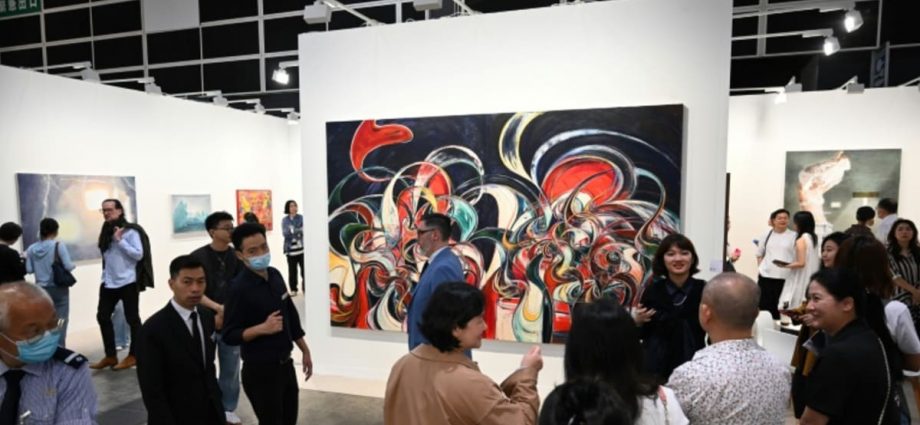
COMPETING CITIES
For art collectors, however, the crackdown has not seemed to matter.
“So far we feel like there’s been no impact, we are confident that we will be operating the same way as before,” Siyang-Le said.
Foreign artists said they were happy to take advantage of Hong Kong’s market.
“It’s an opportunity to get more (exposure),” said M Pravat, a New Delhi-based artist who was exhibiting at Art Basel.
Years of harsh pandemic restrictions in Hong Kong have seen other Asian cities, including Seoul and Singapore, vie to supplant it on the international art scene.
Thierry Ehrmann, head of market analysis firm Artprice, said Hong Kong remained well-placed to compete.
“Hong Kong retains the advantage of a well-structured market, with the presence of the major international players… which translates into a considerable lead in terms of sales revenue,” he told AFP.
One of Hong Kong’s main advantages for collectors is its lack of customs duties, value-added taxes or inheritance taxes on works of art.
“EXTRAORDINARY” POTENTIAL
China is the world’s second-largest art market, after the United States, with sales set to recover from a dip related to pandemic controls that have now been lifted, according to Artprice.
The world’s three main art auction houses are expanding their presence in Hong Kong, where art auctions netted more than US$1.16 billion last year.
Sotheby’s was projected to generate 12 per cent of its global art auction turnover in Hong Kong in 2022, compared with 13 per cent for Phillips and eight per cent for Christie’s.
Last year, Sotheby’s signed a lease for a 2,230 sq m space in the heart of Hong Kong’s Central district, which boasts some of the most expensive rents in the world.
“The potential is extraordinary,” said Alex Branczik, chairman for Modern and Contemporary Art in Asia for Sotheby’s. “The acquisition of this space really shows that we are here to stay”.
NEW CLIENTS
Today, the auction house has as many bidders in Asia as it does in North America.
“These bidders in Asia are fundamentally important to our sales rooms in London, New York, Paris and so forth,” said Branczik.
In 2022, one-third of Sotheby’s Asia bidders were new clients, and two-thirds of new clients worldwide were from the region.
Artists not in the city’s art elite, however, have had more trouble making a living.
“In my career, I try not to rely on selling my works to galleries as a way of living, they are simply not reliable,” said Wong, the dissident, who now lives in Taiwan and says he “dare not” exhibit his work in Hong Kong.
Auction houses and collectors, he said, steer clear of “sensitive artists and works”.
“For them these types of works are landmines.”

